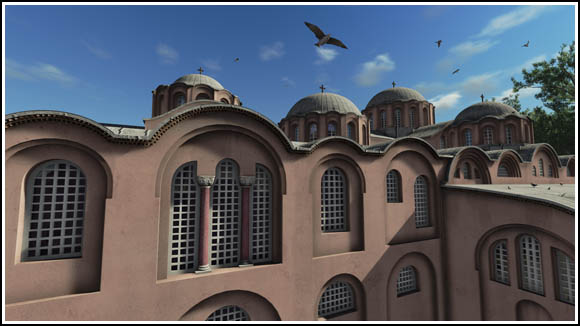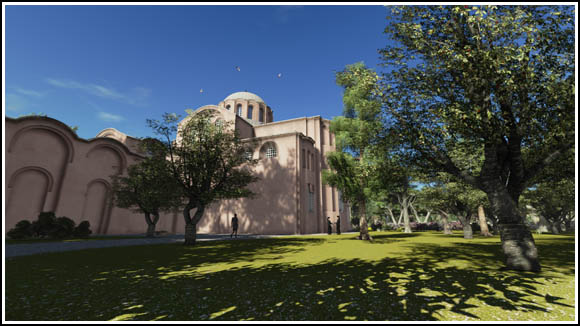Monastery and Hospital of St. Titianus
The 60 or so beds must have pillows and clean sheets, and different sections for those suffering from wounds or fractures, intestinal illnesses, and gynocological conditions. There must be bathing facilities, overflow areas, and special mattresses for incontinent patients. Every visitor has to be fed with bread, vegetables dressed with olive oil
Origins
A small shrine to the goddess Orbaia. dated from the 3rd century AP, existed in that place before the monastery was founded. Princess Cornelia built a private garden there two centuries later but by the early 700s the garden area was in a state of neglect. In 791 the area was purchased by the then prince and future Emperor Xan II and his wife Cecilia of Bovoria for building a new monastery and hospital complex. The city of Blati has multiple charitable establishments dedicated to the caring of the sick and wounded, especially since the imperial capital is so densely populated and it's an important center of pilgrimage, these hospitals were often founded by wealthy and noble families, the Imperial family or by colleges of priests of different gods. But Xan and his wife wanted to create one of the largest religious complexes in the city as well as the most efficient hospital. Work began that very same year and concluded in 801 AP when the monastery and hospital were opened with a procession carrying the statue of the Prophet as well as that of the goddess Orbaia (whose shrine was transformed into a magnificent temple inside the monastic complex). 250 monks (70 of them with background as doctors) began to live there as well as 10 lay doctors asigned to the hospital . The hospital has state of the art equipment to deal with most known diseases, both natural and magic as well as an impressive library (continuosly expanded by the monks themselves) containing many famous books about medicine and magic from all around the known world. Since then, the hospital at St. Titianus Monastery is one of the most sought after medical institutions in Blati.Arrangement of the hospital
The hospital is located at the easternmost side of the Monastery, close to one of the main aqueducts that bring fresh water to the city from the nearby mountains to the west. Contrary to other, smaller hospitals around the imperial capital and in other regions of Yeia, it's beds are for one patient each. The hospital is divided into 5 separate wards. In the first section there are 10 beds for people who suffers from wounds or fractures, this place has its own surgical operations area. The next three areas share a central hearth. The first had eight beds and dealt with eye or intestinal or other acute disorders. The other two, of ten beds each, were also for men suffering from chronic diseases.
Blatian doctors curing a man who suffers from Frozen Bite (Blatian miniature of the 6th century AP) by Callyxtus
The doctor monks, of course, must live in the monastery and the lay doctors have the option of living in their houses or to have a room for them at the monastery, close to the hospital. When on duty the doctors are to make their rounds once a day , the rest of the time, including the night shift, their assistants are in charge.Good day Caecilia!, how are you doing today? Good day, doctor Stylianus, feeling much better Let me see...oh wonderful! the ice is slowly dissapearing Will I be alright? Yes! only one session and I'm sure you can go home!, I swear on St. Titianus relics if needed. Should I drink that awful drink again?... I'm affraid yes, ma'am, it's just a precautionary measure





Such a well thought out article and love the detail that it goes into!
Thank you Oaster!!!